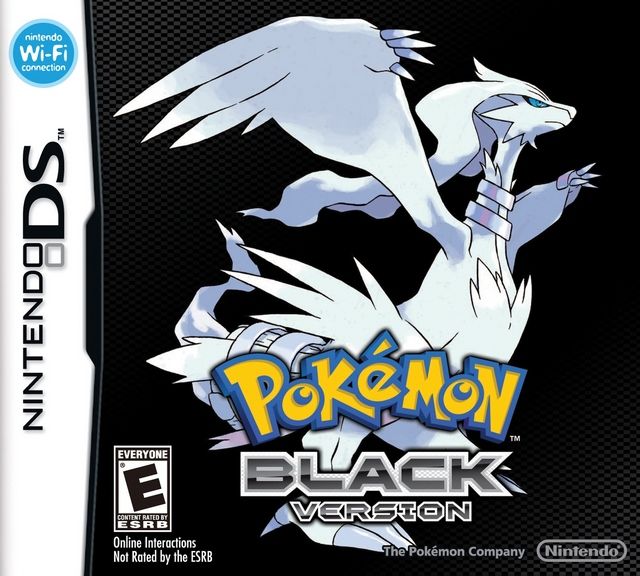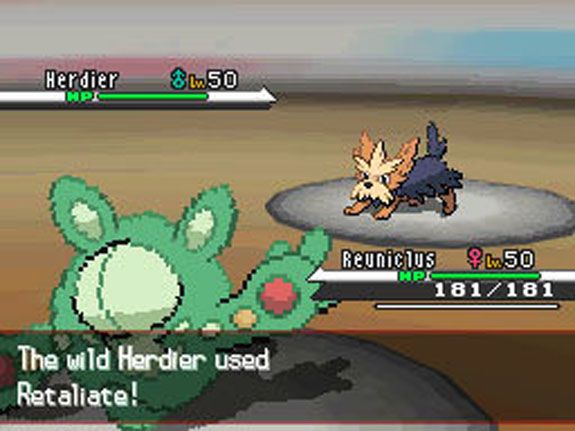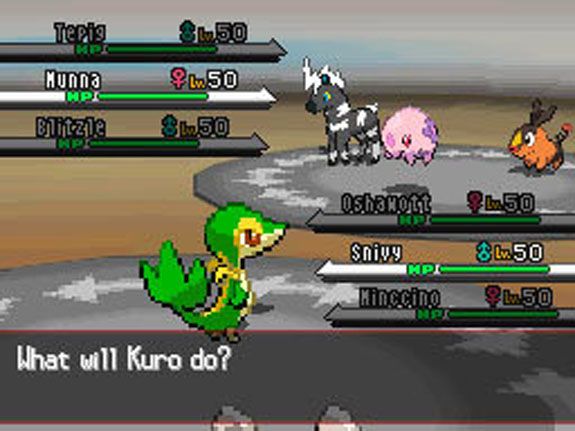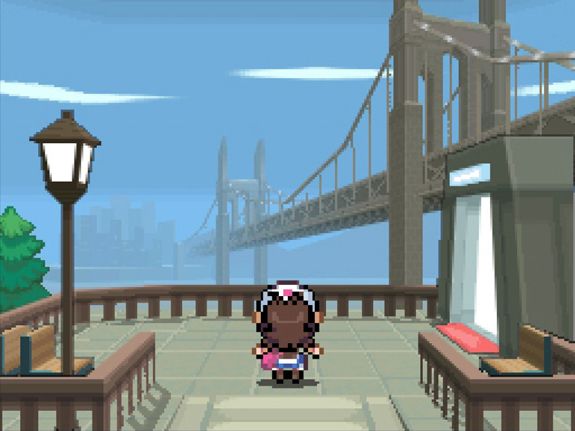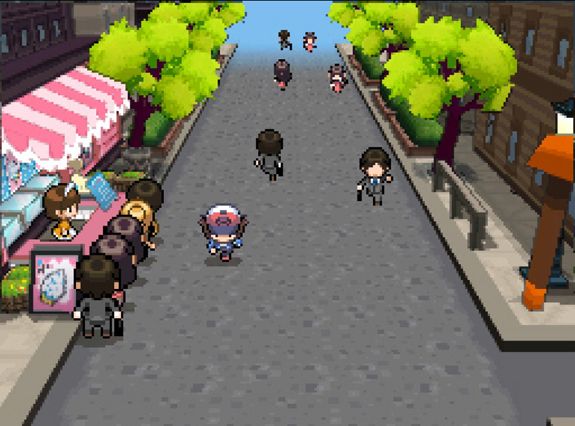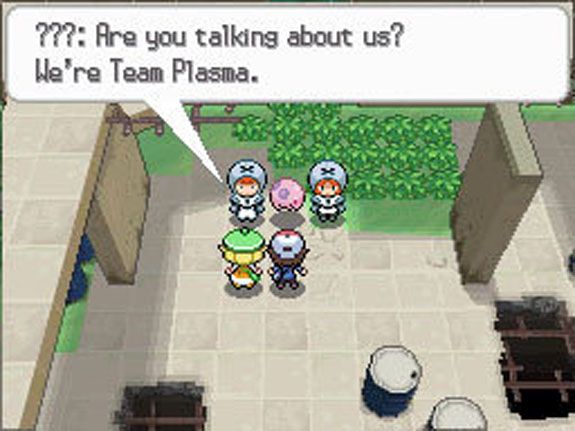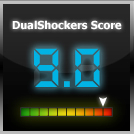The fifth generation of the behemoth Pokémon franchise is finally here. A vast new region is yours to explore, full of new trainers, villains, and of course, yet another new set of creatures for you to capture. We all have a good idea of what to expect from the core of this series by now, so the real question is: how much has been changed? Short answer: Quite a bit.
Hit the jump for the long answer, and I'll run down what's new, what's different, and whether the brand-new Unova region is worth the time it'll take you to traverse.
The first thing you need to know is that, like the previous generations, there is a lot of content to see here. The game's main quest takes easily 20 hours to complete, and there's even more to do after you've reached the end. And if you're the collector type that's actually interested in reaching that nigh-unattainable goal of The Complete Pokédex, well, be prepared to spend upwards of two hundred hours on the task. With the addition of this generation's 155 new species, the total Pokémon out there to catch has reached a whopping 649. We're a long ways from Kanto's original 151 here, folks. The collect / battle / trade mentality the series is known for still has serious legs, and can keep you coming back to this little portable title for months.
Pokémon Black & White introduce a number of new social features to help facilitate your continued desire to collect new Pokémon, including the C-Gear, the Fifth-Gen analog to Diamond & Pearl's Pokétch, which will occupy your DS's bottom screen. When the C-Gear is turned on, it will passively scan the local wireless area for other C-Gears, and upon finding them, can exchange information or activate the radio-like Xtransceiver system for actual voice and, if you're playing on a DSi or DSi XL, actual video communication. The C-Gear also allows you to magically teleport to the Entralink, a mysterious location at the center of the region, which introduces a whole mess of multiplayer features, and can actually transport you to another player's Unova to complete various co-operative missions for fun and profit.
As of this writing, the full features of the Entralink (particularly those related to the Pokémon Global Link and the so-called Pokémon Dream World) are actually unavailable: they use a web server feature that was supposed to go live this month, but was delayed indefinitely as a result of the Japanese earthquake and tsunami. It's truly unfortunate, as those features are potentially very cool, but under the circumstances they cannot be reviewed.
Overall, I think most American gamers will find the C-Gear to be something of a disappointment. The fact is, most of us don't have the opportunity to play the game in the types of situations the C-Gear was designed to take advantage of, so it'll probably just sit, unused. It feels like an incredible waste of that bottom screen, especially after all the great uses we saw for it in Diamond & Pearl.
Black & White also introduce two new Pokémon battle formats: the Triple Battle and Rotation Battle. Triple Battles are exactly what they sound like: battles where both competitors send our three Pokémon at a time. There are certain rules that give it a little more depth than simply "there are three of them", like rules about which of your Pokémon can attack which of your opponent's, but it's generally exactly what you'd expect. Rotation Battles are somewhat more interesting; like Triples, they also feature six Pokémon on the field simultaneously, but only one will be "active" at any one time. Basically, only the active Pokémon can attack or be attacked that in a given round, but you're free to rotate your active Pokémon freely between rounds. It's a pretty cool concept, but unfortunately, both new battle types are criminally underused. Of the hundreds of battles you'll have throughout the game, only a small handful will be of either new type.
The visuals have received some updates from the previous two Pokémon versions on the DS, especially in the game's battles. No longer static sprites, Pokémon now fully animate while on screen, and the camera will pan and zoom as they attack to make battles feel much more exciting. Outside of battles, the visuals and scenery do a great job of changing things up. The camera pulls way back to show huge environments and structures, such as Unova's many bridges, or pulls in for a lower angle to show a busy street. It's not a visual overhaul by any means, but it gives the new region a lot of flavor, and helps keep everything fresh.
The story doesn't take too many chances with the old formula. As always, you're given a Pokédex and a starter from your podunk town's resident scientist, you proceed to start knockin' down gym leaders, and eventually run across a Team with some sort of nefarious plot involving some legendary Pokémon. This time around, though, the story has a little more backbone. Instead of being saddled with one obnoxious rival, you set out of town with two friends (by many accounts, still rather obnoxious), and they actually participate in many of the bigger story moments, instead of just waltzing in to battle you at inopportune times. Black also does a much better job of tying in your quest to become Pokémon master with the aforementioned nefarious plot throughout the game. Whereas in previous versions they felt like fairly distinct concerns, they dovetail quite nicely here, as the commander of Team Plasma also seeks to become the league Champion. This leads to an incredibly climactic end sequence that feels like nothing else the series has ever done. Admittedly, the writing doesn't always live up to the scenario's high aspirations: when it's not terribly heavy-handed, it's simply flat and uninteresting. At best, it gets the job done, but it never quite pushes the 5th-grade reading comprehension barrier.
Overall, Black seems much more intelligently designed than its predecessors. It really feels as though the creators re-examined every element of the formula and took LOTS of feedback from players to make a really refined game. There have been lots of minor but important changes, like the ability to re-use TMs, the ability to trade any Pokémon you like during a trading sequence (as opposed to only those in your party of six), and the consolidation of the Pokémon Center and Shop into a single building. It really comes across in the modification of the HM system, which has been a staple of the series from the very first version.
For the uninitiated, HM moves are Pokémon attacks that are used in the game world in addition to combat, such as Surf, a move that allows the player to travel over water, or Strength, which facilitates the moving of large boulders to clear new paths. In previous games, progression through the world relied quite heavily on which of these techniques were available to you. HM moves are still present, but this time around, it's entirely possible to reach the end of the game (or at the very least, the part that says "The End") without ever having used one in or out of combat. It's a welcome change; the HM system often felt much more cumbersome than rewarding, forcing players to carry around a Pokémon they otherwise wouldn't just so they can get around the world. Using them to gate off only things that are effectively extras feels like a much better use for them, and allows you to focus on only the Pokémon you actually want to use.
Another small but incredibly interesting choice is the brand-new experience point scaling system. In previous games, a given opponent of a given type and level would award a specific amount of experience, regardless of the Pokémon you used to defeat it. Now, though, the experience reward actually changes, somewhat dramatically, depending on the level of your Pokémon. If your Pokémon's level is lower than that of your opponent's, you will get considerably more experience for that win than it would if your Pokémon was even with or higher than its foe. I know it doesn't sound like much, but this actually changes the way the game plays in a few pretty significant ways.
First, it makes the whole game feel much less "grindy". Second, the fact that your relatively under-leveled party members grow more quickly encourages more even leveling throughout your party. Combined with the fact that a high-powered Pokémon grows fairly slowly when battling weak opponents, it means that you're much less likely to end up in an annoyingly irreversible situation where one of your Pokémon grows dramatically higher than the rest. It also produces a pretty cool risk-reward system within battles, because the prospect of a higher payout is going to make you want to use a weaker Pokémon to get the job done. The unfortunate part of this change is that it makes those encounters with low-level wild Pokémon even more annoying than they were before, because the reward for beating them becomes so paltry. And they're no less frequent, so be prepared to carry lots and lots of Repels wherever you go.
The bottom line here is that Pokémon is a series that sticks to a winning formula. If you've tried it out before and decided it wasn't your thing, there's nothing here that's going to change your mind. If, somehow, you've never tried it, Black & White might actually be a pretty great place to start. It's probably the most streamlined, intelligently designed entry to the core series we've seen. Fans will be impressed by the improvements to a game they already adore, and while a few of those new elements fall short, there's still a lot here to love.
-
Title: Pokémon Black and White
- Platform: Nintendo DS / DSi
- Developer: Game Freak
- Publisher: Nintendo
- Release Date: March 6, 2011
- MSRP: $34.99
- Review Copy Info: A copy of this title was provided to DualShockers Inc. by the publisher for the purpose of this review.
Pokemon Black and White
- Platform(s)
- Nintendo DS
- Developer(s)
- Game Freak
- Publisher(s)
- Nintendo
- Genre(s)
- JRPG

